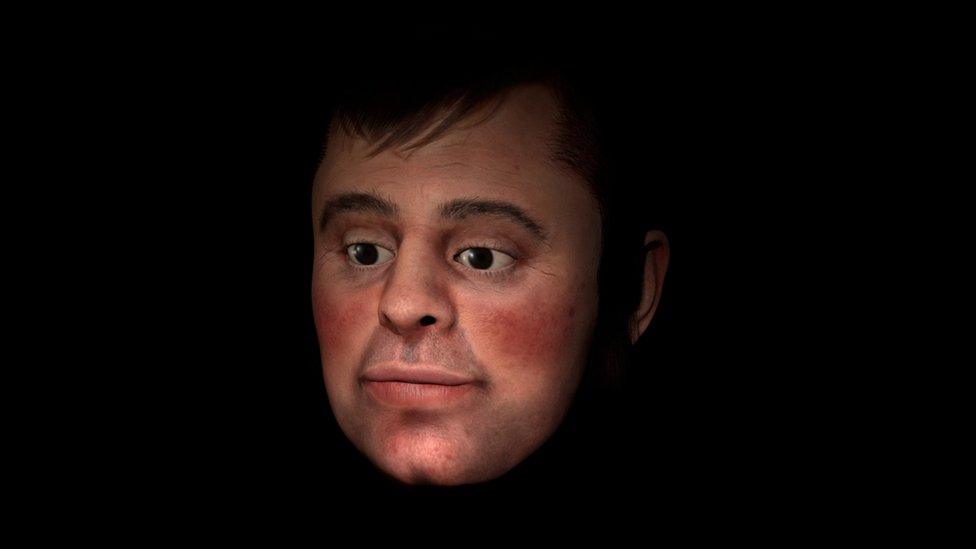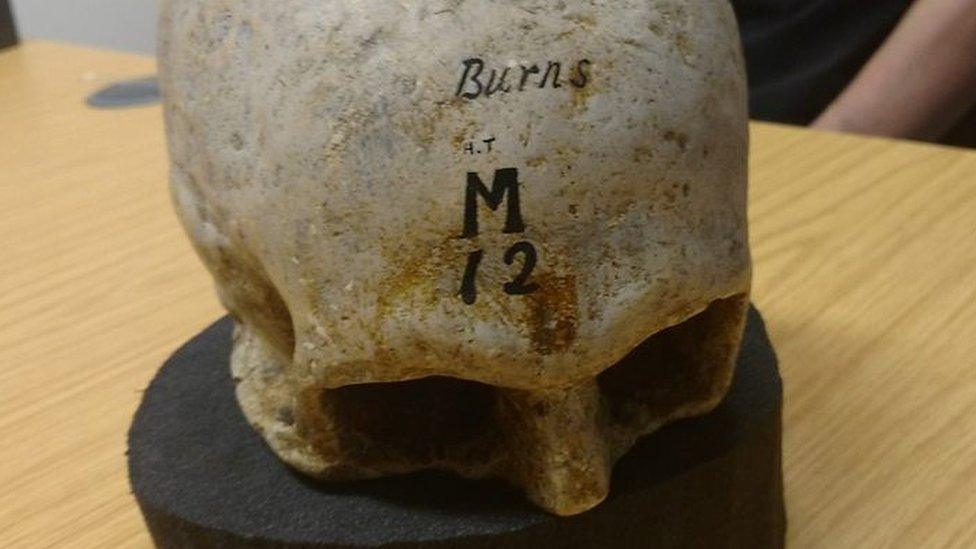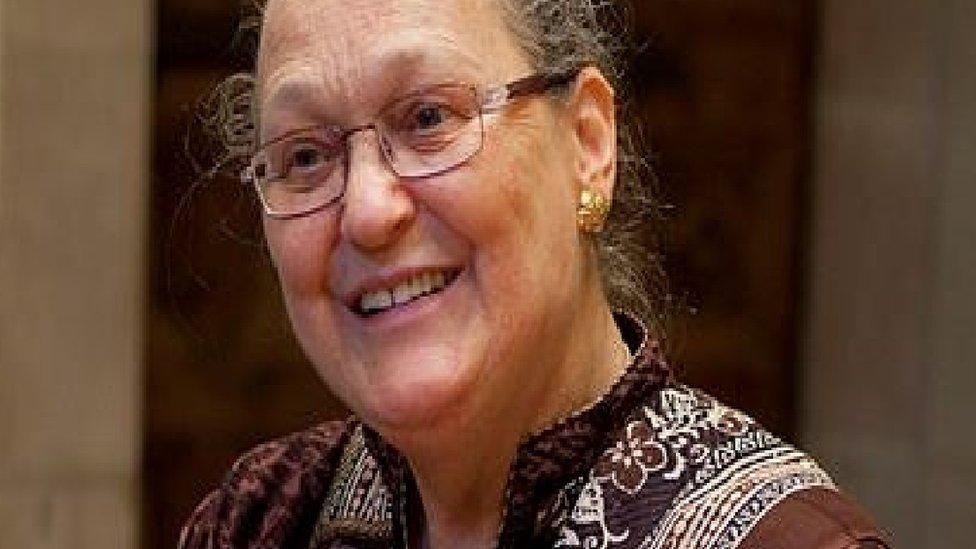Robert Burns poem 'brought to life' by new 3D animation
- Published
Animated Robert Burns reads poem
A 3D animation has been created of Robert Burns reciting one of his most famous poems.
The latest technology was used to recreate the Scottish bard's face from a partial cast of his skull.
The words were spoken by modern-day Ayrshire poet, and Burns enthusiast, Rab Wilson.
Motion capture was then used to track his facial movements as poem To a Mouse was recited.
It was Mr Wilson's idea to use the skull cast to recreate the bard reciting one of his best known works.
He said: "It had always occurred to me, that the burns skull existed.
"I thought well we can take the skull and rebuild Burns' face."
The project involved a team from Liverpool John Moores University and the University of Dundee.
Once the facial movements were transferred to the 3D digital model of Burns, Mr Wilson's voice was added to the final animation.


Prof Caroline Wilkinson, from Face Lab at John Moores University, said: "This real-life animation of Robert Burns has brought the poetry of this Scots Bard back to life for generations to come."
"We didn't want it to look like an animation, we wanted it to look like a living person."
The team would now like to apply the technology to other historical figures.
Mr Wilson said: "This is an amazing leap forward, it has so many possibilities now, especially for education, being able to have Burns come alive and read his poems for kids in schools.
"Who knows what other applications there might be."

From one Ayrshire poet to another: Rab Wilson next to the digital recreation of Burns
Burns was born on 25 January 1759 in the village of Alloway, Ayrshire, and his birthday has been celebrated with suppers in his honour for about 200 years.
The poet, who wrote Auld Lang Syne, To a Mouse and Ae Fond Kiss, died in 1796, at the age of 37.
Some 40 years after his death his grave was reopened and a cast was taken of his skull.
The latest animation will be screened to the public at the Scottish National Portrait Gallery in Edinburgh on Burns Day.
- Published25 January 2018

- Published24 January 2018
